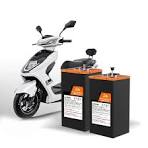How to Charge Batteries in Parallel
How to Charge Batteries in Parallel: A Comprehensive Guide
Charging batteries in parallel can be an effective way to ensure all cells are charged simultaneously and efficiently. This method is commonly used in various applications, such as powering solar systems, electric vehicles, and backup power systems. However, it’s crucial to understand the correct procedure to avoid damage to the batteries or charging equipment. This guide will walk you through the steps, precautions, and tips for charging batteries in parallel safely and effectively.
What Does Charging Batteries in Parallel Mean?
When batteries are connected in parallel, their positive terminals are linked together, and their negative terminals are also connected. This configuration maintains the same voltage as a single battery but increases the overall capacity (measured in ampere-hours, or Ah). For instance:
- Two 12V batteries with 100Ah capacity each, connected in parallel, will still provide 12V but with a combined capacity of 200Ah.
Parallel charging ensures all batteries receive the same voltage during the charging process, making it ideal for systems requiring higher capacity.
Advantages of Charging Batteries in Parallel
- Increased Capacity:
- Parallel connections increase total capacity without altering the system voltage.
- Uniform Charging:
- All batteries are charged simultaneously, reducing the risk of overcharging or undercharging individual units.
- Scalability:
- Adding more batteries in parallel is simple and allows for increased energy storage.
- Flexibility:
- Parallel charging is compatible with various battery types, such as lead-acid, lithium-ion, and nickel-metal hydride (NiMH).
Step-by-Step Guide to Charging Batteries in Parallel
1. Gather the Necessary Equipment
Before you begin, ensure you have the following:
- Batteries with the same voltage and capacity.
- A compatible charger (matched to the battery voltage).
- Appropriate cables and connectors.
- A multimeter (optional, for verifying connections).
2. Ensure Batteries Are Compatible
All batteries in a parallel configuration should have:
- The same voltage rating (e.g., 12V).
- Similar capacity (Ah rating).
- The same chemistry type (e.g., all lead-acid or all lithium-ion).
Using mismatched batteries can cause uneven charging and reduce overall performance.
3. Connect the Batteries in Parallel
To connect batteries in parallel:
- Connect the positive terminals of all batteries using a cable or busbar.
- Connect the negative terminals of all batteries in a similar manner.
- Double-check the connections to ensure there are no short circuits or loose cables.
Tip: Use cables of equal length and gauge to minimize resistance and ensure even current distribution.
4. Connect the Charger
- Attach the charger’s positive cable to the positive terminal of one battery.
- Attach the charger’s negative cable to the negative terminal of the same battery.
- Ensure the charger is set to the appropriate voltage for the batteries (e.g., 12V for a 12V system).
5. Begin Charging
- Turn on the charger and monitor the process.
- Check the charger’s display (if available) to ensure it is functioning correctly.
- If using a multimeter, periodically measure the voltage across the battery terminals to verify charging progress.
6. Monitor the Batteries
- Keep an eye on the batteries for signs of overheating, swelling, or unusual behavior.
- Stop charging immediately if any issues arise.
7. Disconnect Safely
Once charging is complete:
- Turn off the charger.
- Disconnect the charger’s cables from the batteries.
- Disconnect the parallel connections if necessary.
Precautions When Charging Batteries in Parallel
- Use Identical Batteries:
- Mismatched batteries can cause imbalances, leading to overcharging or undercharging.
- Avoid Overcharging:
- Use a charger with an automatic shutoff feature or a battery management system (BMS) to prevent overcharging.
- Monitor Charging Current:
- Ensure the charger provides sufficient current without exceeding the batteries’ recommended input.
- Check for Loose Connections:
- Loose cables can cause sparking or uneven charging.
- Ventilation:
- Ensure the charging area is well-ventilated, especially when charging lead-acid batteries, which can emit hydrogen gas.
Troubleshooting Common Issues
1. Uneven Charging
- Cause: Batteries with different capacities or internal resistances.
- Solution: Use batteries with identical specifications and check connections.
2. Overheating
- Cause: High charging current or damaged batteries.
- Solution: Lower the charger’s current setting and inspect the batteries for damage.
3. Slow Charging
- Cause: Insufficient charging current or high internal resistance.
- Solution: Ensure the charger’s output matches the total capacity of the batteries.
4. Charger Not Starting
- Cause: Incorrect connections or faulty charger.
- Solution: Verify connections and test the charger with a single battery.
Frequently Asked Questions
1. Can I mix different battery types in parallel?
No, mixing battery types (e.g., lead-acid and lithium-ion) can lead to uneven charging and potential damage. Always use batteries of the same type and specifications.
2. How long does it take to charge batteries in parallel?
Charging time depends on the total capacity (Ah) of the parallel configuration and the charger’s output current. For example:
- Two 12V 100Ah batteries connected in parallel (200Ah total) charged with a 10A charger will take approximately 20 hours.
3. Is a battery management system (BMS) necessary?
While not always required, a BMS can help balance charging and protect against overcharging, especially in lithium-ion systems.
Conclusion
Charging batteries in parallel is a practical way to increase capacity and maintain a consistent voltage. By following the steps and precautions outlined in this guide, you can ensure a safe and efficient charging process. Always prioritize battery compatibility and monitor the charging process to avoid potential issues. With proper care, your parallel battery system will deliver reliable performance for years to come.



